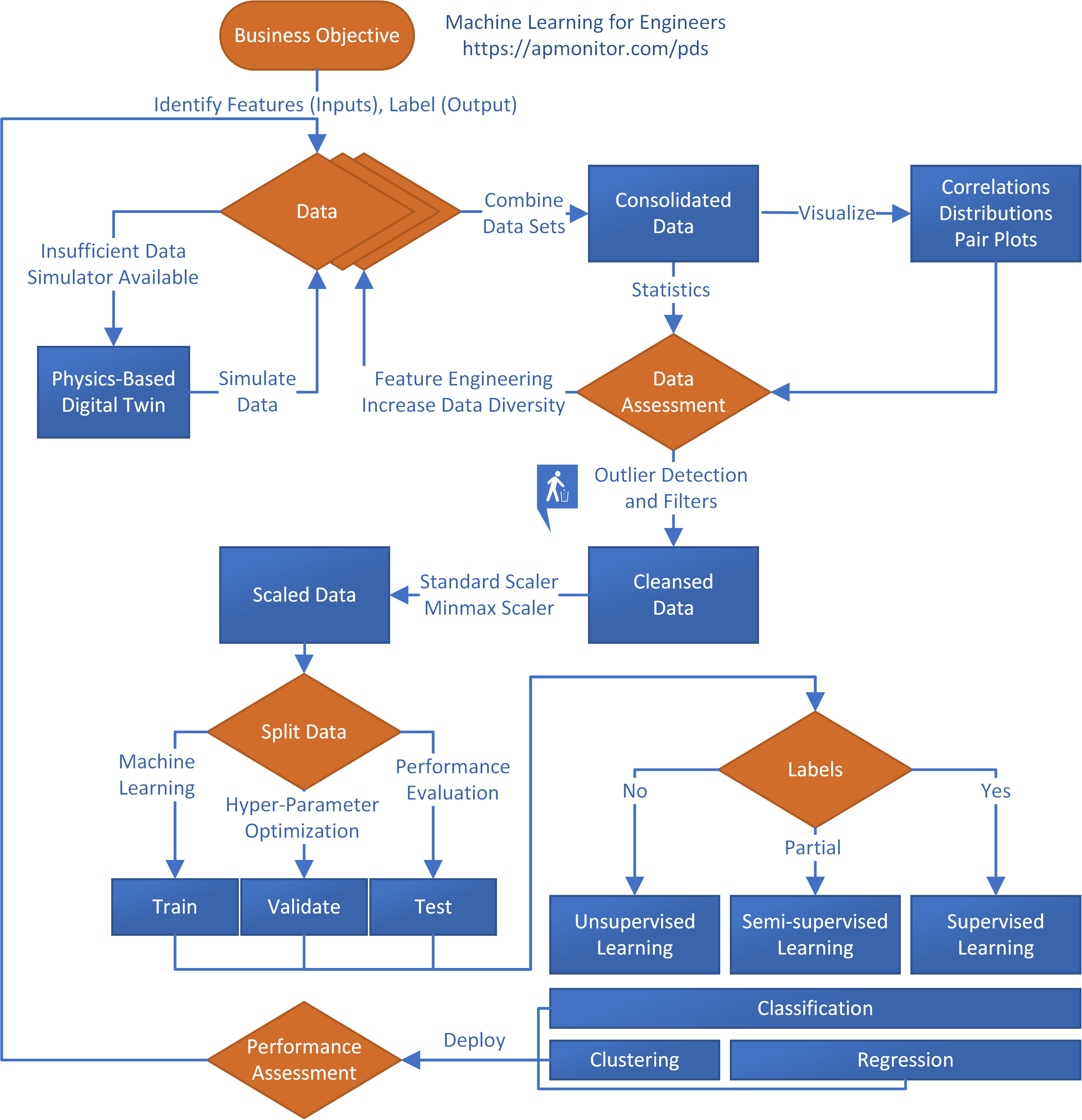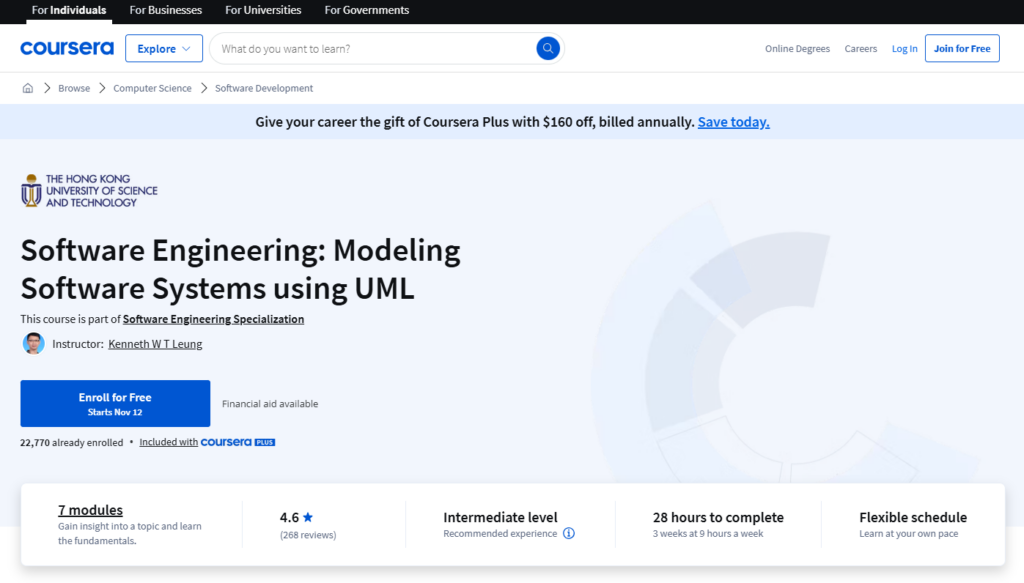All Categories
Featured
Table of Contents
- – The smart Trick of How I Went From Software De...
- – 7 Best Machine Learning Courses For 2025 (Read...
- – The Of Become An Ai & Machine Learning Engineer
- – Unknown Facts About How To Become A Machine L...
- – See This Report on Machine Learning Certific...
- – The Buzz on Certificate In Machine Learning
You probably know Santiago from his Twitter. On Twitter, every day, he shares a whole lot of functional points concerning machine understanding. Alexey: Prior to we go into our major subject of relocating from software application engineering to device discovering, perhaps we can start with your history.
I went to university, obtained a computer system scientific research level, and I started building software. Back then, I had no concept concerning maker understanding.
I recognize you have actually been utilizing the term "transitioning from software engineering to machine learning". I such as the term "including in my ability the machine understanding skills" more because I think if you're a software program engineer, you are already supplying a great deal of value. By including maker discovering now, you're boosting the effect that you can have on the market.
That's what I would do. Alexey: This returns to one of your tweets or possibly it was from your training course when you contrast two strategies to learning. One approach is the issue based approach, which you just spoke about. You find a trouble. In this situation, it was some problem from Kaggle about this Titanic dataset, and you simply discover exactly how to solve this problem utilizing a details tool, like decision trees from SciKit Learn.
The smart Trick of How I Went From Software Development To Machine ... That Nobody is Talking About
You initially find out math, or linear algebra, calculus. When you know the mathematics, you go to equipment understanding concept and you discover the concept.
If I have an electrical outlet here that I require changing, I don't wish to go to college, invest four years understanding the math behind power and the physics and all of that, simply to change an outlet. I prefer to start with the outlet and find a YouTube video clip that assists me undergo the trouble.
Bad analogy. You get the concept? (27:22) Santiago: I really like the idea of beginning with a problem, attempting to toss out what I recognize as much as that problem and recognize why it doesn't work. Order the devices that I require to address that problem and start excavating much deeper and deeper and much deeper from that point on.
To make sure that's what I normally recommend. Alexey: Maybe we can chat a little bit regarding learning sources. You mentioned in Kaggle there is an intro tutorial, where you can get and discover exactly how to choose trees. At the beginning, before we began this meeting, you pointed out a couple of books.
The only need for that program is that you know a little of Python. If you're a developer, that's an excellent base. (38:48) Santiago: If you're not a designer, after that I do have a pin on my Twitter account. If you most likely to my account, the tweet that's going to get on the top, the one that states "pinned tweet".
7 Best Machine Learning Courses For 2025 (Read This First) for Beginners
Also if you're not a designer, you can start with Python and work your means to more artificial intelligence. This roadmap is concentrated on Coursera, which is a platform that I truly, really like. You can investigate every one of the training courses absolutely free or you can spend for the Coursera subscription to obtain certifications if you desire to.
So that's what I would certainly do. Alexey: This comes back to among your tweets or possibly it was from your program when you contrast two approaches to understanding. One strategy is the problem based approach, which you simply spoke about. You locate a problem. In this situation, it was some problem from Kaggle regarding this Titanic dataset, and you just find out exactly how to address this trouble making use of a certain tool, like decision trees from SciKit Learn.

You first find out mathematics, or direct algebra, calculus. When you recognize the math, you go to maker understanding theory and you find out the theory. 4 years later, you ultimately come to applications, "Okay, exactly how do I use all these 4 years of mathematics to solve this Titanic issue?" Right? In the former, you kind of save yourself some time, I believe.
If I have an electric outlet here that I require replacing, I do not intend to most likely to college, spend four years comprehending the mathematics behind power and the physics and all of that, just to alter an electrical outlet. I prefer to begin with the outlet and discover a YouTube video clip that aids me undergo the problem.
Negative example. But you understand, right? (27:22) Santiago: I actually like the idea of starting with a problem, trying to toss out what I understand approximately that problem and recognize why it does not work. Get the devices that I require to fix that trouble and start digging much deeper and much deeper and much deeper from that factor on.
Alexey: Maybe we can chat a little bit about discovering resources. You pointed out in Kaggle there is an intro tutorial, where you can obtain and find out just how to make decision trees.
The Of Become An Ai & Machine Learning Engineer
The only requirement for that course is that you understand a bit of Python. If you're a designer, that's an excellent base. (38:48) Santiago: If you're not a programmer, after that I do have a pin on my Twitter account. If you most likely to my profile, the tweet that's mosting likely to be on the top, the one that claims "pinned tweet".
Also if you're not a designer, you can start with Python and work your way to even more equipment learning. This roadmap is concentrated on Coursera, which is a system that I truly, truly like. You can audit all of the courses for complimentary or you can pay for the Coursera registration to get certificates if you wish to.
Unknown Facts About How To Become A Machine Learning Engineer & Get Hired ...
To ensure that's what I would certainly do. Alexey: This comes back to among your tweets or perhaps it was from your course when you contrast two methods to understanding. One strategy is the trouble based method, which you simply spoke about. You find an issue. In this instance, it was some problem from Kaggle about this Titanic dataset, and you simply discover just how to resolve this issue using a specific device, like choice trees from SciKit Learn.

You initially learn math, or direct algebra, calculus. When you understand the math, you go to machine learning theory and you find out the concept.
If I have an electric outlet right here that I need replacing, I do not intend to go to university, spend 4 years recognizing the math behind electricity and the physics and all of that, just to alter an outlet. I prefer to begin with the outlet and discover a YouTube video clip that aids me undergo the trouble.
Santiago: I truly like the idea of beginning with a trouble, trying to toss out what I understand up to that issue and understand why it does not work. Get hold of the devices that I need to solve that trouble and begin excavating much deeper and deeper and deeper from that point on.
Alexey: Perhaps we can speak a bit regarding discovering resources. You stated in Kaggle there is an introduction tutorial, where you can get and learn exactly how to make choice trees.
See This Report on Machine Learning Certification Training [Best Ml Course]
The only demand for that program is that you understand a little bit of Python. If you go to my profile, the tweet that's going to be on the top, the one that claims "pinned tweet".
Also if you're not a developer, you can start with Python and function your way to even more artificial intelligence. This roadmap is concentrated on Coursera, which is a platform that I really, really like. You can investigate all of the courses totally free or you can spend for the Coursera membership to obtain certificates if you want to.
Alexey: This comes back to one of your tweets or maybe it was from your course when you compare 2 techniques to learning. In this instance, it was some problem from Kaggle about this Titanic dataset, and you simply learn exactly how to solve this issue utilizing a particular device, like decision trees from SciKit Learn.
You initially find out math, or linear algebra, calculus. When you recognize the math, you go to device knowing concept and you discover the theory.
The Buzz on Certificate In Machine Learning
If I have an electric outlet here that I require changing, I do not intend to most likely to university, invest 4 years recognizing the mathematics behind electrical power and the physics and all of that, just to change an outlet. I prefer to begin with the electrical outlet and find a YouTube video that assists me undergo the trouble.
Santiago: I actually like the idea of starting with a trouble, trying to throw out what I understand up to that issue and recognize why it does not function. Get hold of the devices that I need to address that problem and begin excavating deeper and deeper and deeper from that factor on.

To make sure that's what I typically suggest. Alexey: Possibly we can speak a little bit concerning discovering resources. You stated in Kaggle there is an intro tutorial, where you can get and find out how to make choice trees. At the start, prior to we started this interview, you pointed out a couple of books.
The only need for that training course is that you understand a bit of Python. If you're a developer, that's a great base. (38:48) Santiago: If you're not a developer, after that I do have a pin on my Twitter account. If you most likely to my profile, the tweet that's going to be on the top, the one that states "pinned tweet".
Even if you're not a programmer, you can start with Python and function your way to even more artificial intelligence. This roadmap is concentrated on Coursera, which is a system that I truly, really like. You can audit all of the training courses free of charge or you can spend for the Coursera membership to obtain certifications if you wish to.
Table of Contents
- – The smart Trick of How I Went From Software De...
- – 7 Best Machine Learning Courses For 2025 (Read...
- – The Of Become An Ai & Machine Learning Engineer
- – Unknown Facts About How To Become A Machine L...
- – See This Report on Machine Learning Certific...
- – The Buzz on Certificate In Machine Learning
Latest Posts
The Best Courses For Software Engineering Interviews In 2025
Software Development Interview Topics – What To Expect & How To Prepare
A Day In The Life Of A Software Engineer Preparing For Interviews
More
Latest Posts
The Best Courses For Software Engineering Interviews In 2025
Software Development Interview Topics – What To Expect & How To Prepare
A Day In The Life Of A Software Engineer Preparing For Interviews